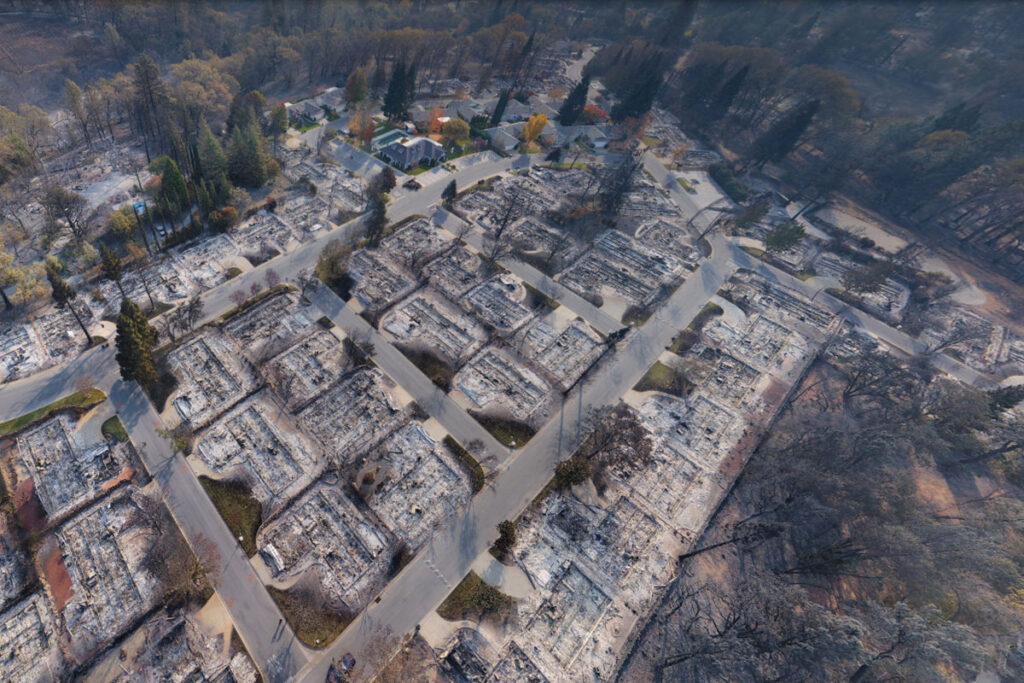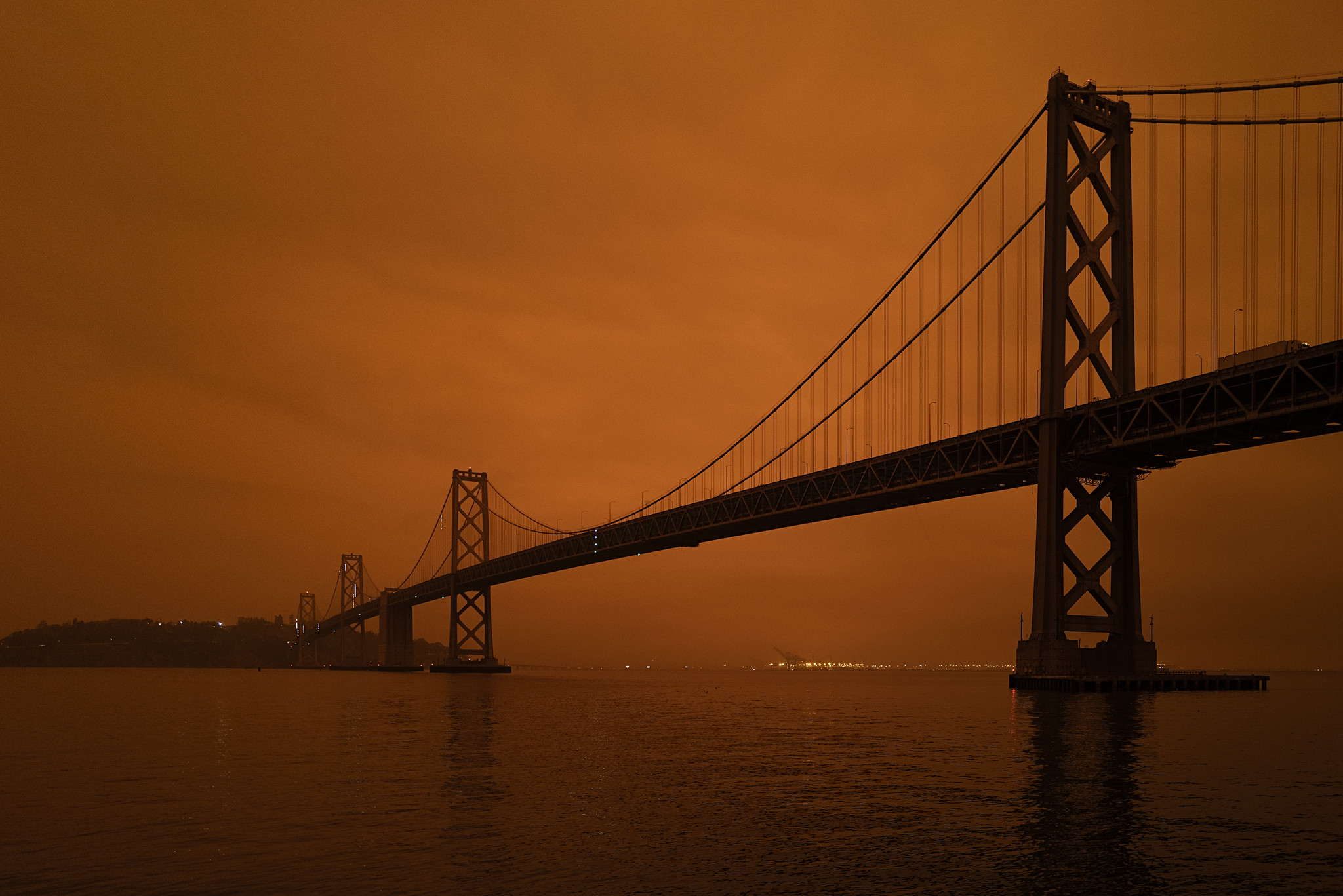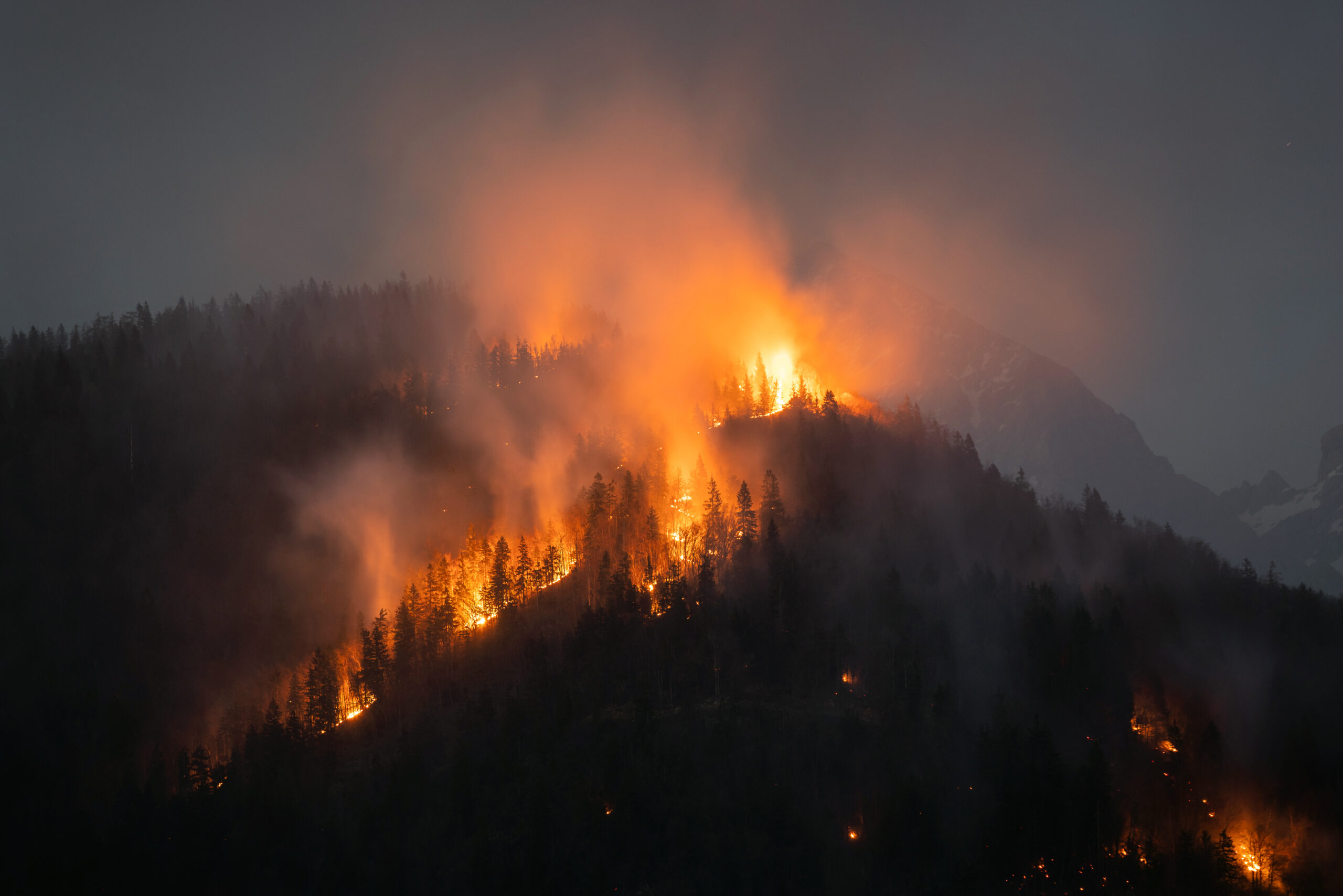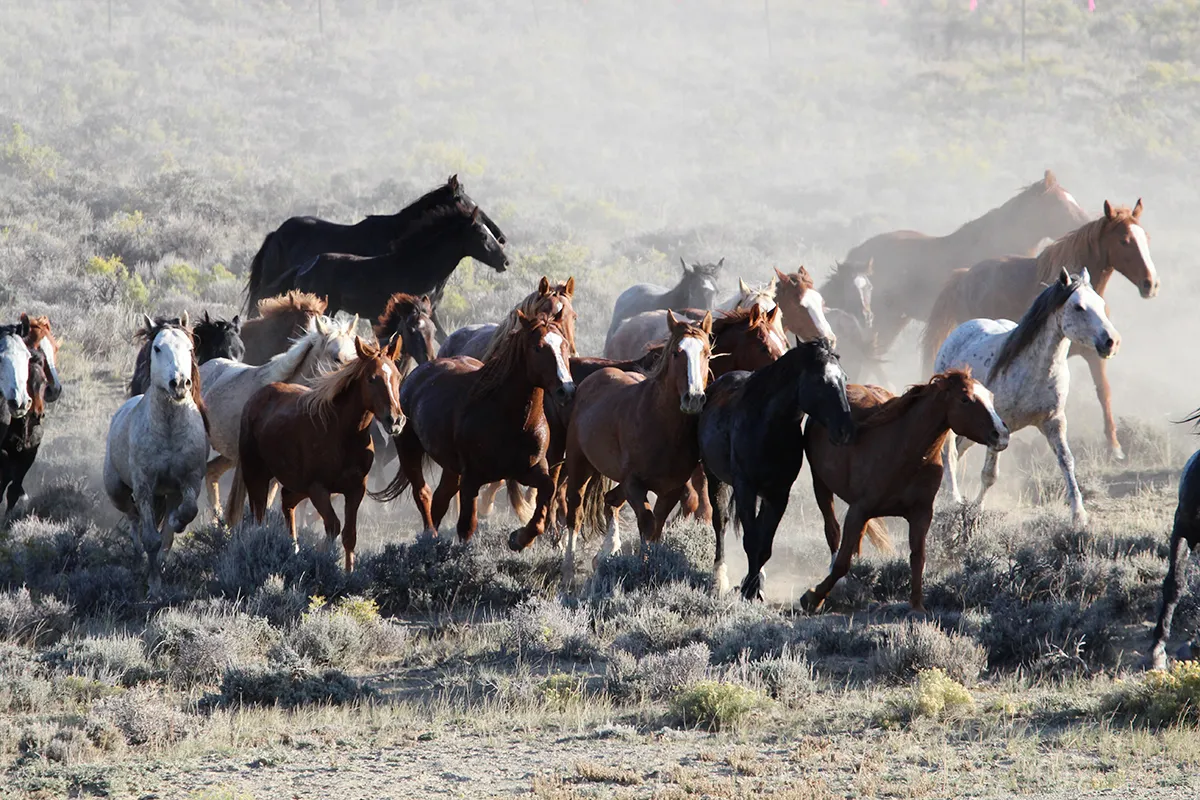This article was originally published in City Journal.
As pandemic restrictions eased across America last year, Californians faced other problems. Amid historic drought conditions, statewide mandates imposed strict water-conservation measures, backed by fines of up to $500 per day. Wildfires led to evacuation warnings near the state’s dense and overgrown forests. Power shortages from heat and fires resulted in a statewide grid emergency. And air-quality alerts kept some residents sheltered indoors from wildfire smoke so thick that it prompted school closures in parts of the state. The San Francisco Chronicle dubbed it the “cruelest summer yet,” adding drought, fires, smoke, and rolling blackouts to the list of reasons people were fleeing the state. While other states returned to a post-Covid normal, California was still reeling—not from the pandemic but from environmental policies that have left it parched and vulnerable to devastating wildfires.
California is defined by its rich, beautiful natural environment, from sun-drenched beaches in the south and towering redwoods in the north to the scenic Sierra Nevada forests in the east. But the very things that make California unique are becoming liabilities that undermine its future. Its Mediterranean-style climate, desirable for both comfortable living and agricultural production, is increasingly drought-prone and fickle. Its rivers and streams, the lifeblood of its cities and farming communities, are diminished and overallocated. And its serene forests, praised by the likes of John Muir and Theodore Roosevelt, have become fire-prone tinderboxes.
Before heavy rains and snowfall caused flooding in parts of the state this spring, California had suffered its driest three-year period on record, resulting in unprecedented water shortages. Some scientists believe that California may be in the middle of its worst drought in more than a millennium. With less precipitation, the state is setting new wildfire records almost every year. Six of its seven largest fires have occurred since 2020, which marked its worst wildfire season in modern history.
As California becomes more susceptible to extreme drought, it has become increasingly clear that mismanagement of the natural environment contributes to the current crisis. From water rules that cause shortages to red tape that fuels extreme wildfires, state and federal policies have deepened California’s most pressing environmental challenges. As a result, the Golden State now confronts the consequences of these choices, with destructive effects on its natural landscapes, its economy, and its residents.
Water scarcity is nothing new in California. During the twentieth century, California and the federal government built giant dams, reservoirs, and aqueducts to store and move water from wetter regions to drier areas of the state. (See “California’s Promethean Past,” Summer 2013.) The Central Valley Project, begun in the 1930s, funnels water from Northern to Central and Southern California. The State Water Project, built in the 1960s, supplies thirsty cities and farms throughout the state. The Colorado River Aqueduct carries water more than 240 miles from the Arizona border to cities across Southern California.
This complex water-delivery system—built and paid for by taxpayers—was designed to provide a steady supply of cheap water to the state’s arid landscapes. Despite these herculean efforts, shortages persist in California. Amid the latest drought, the state’s reservoirs declined rapidly, and water districts faced severe cutbacks. Farmers have fallowed fields, laid off workers, or depleted underground aquifers. Wells have run dry, and some rural communities have had to rely on trucked or bottled water from elsewhere.
With massive public investments in water-supply infrastructure, why is California in a perpetual state of water crisis? Economist Richard McKenzie often poses this question to his business school students at UC–Irvine. In a popular economics book, he recounts how his students would claim that the state’s arid climate is to blame, to which McKenzie responds: “True, it doesn’t rain water in Southern California, but it also doesn’t rain Mercedes Benzes in the area either.” Why doesn’t the state experience shortages of those?
The answer, McKenzie says, is that the price of Mercedes-Benzes—and many other goods that don’t fall from the sky—is free to move with supply and demand, enabling the “resource” to be allocated efficiently. The price of water, by contrast, is largely determined, and constrained, by government policy, not market forces. The price distortions predictably result in overuse. “Where shortages are evident,” McKenzie writes, “it is a good bet that prices have been held in check in some way.” The water economist David Zetland puts it more bluntly: nature makes a drought; man makes a shortage.
In California, subsidized projects supply low-cost water to farmers, who typically hold the most senior rights under the West’s water-allocation system and account for 80 percent of California’s water consumption. Even under drought conditions, California farmers pay as little as a few pennies per thousand gallons of surface water, which is often used to grow alfalfa, rice, or other water-intensive crops. Groundwater is essentially free; farmers typically pay only the energy costs required to pump it.
Barriers to water trading also contribute to California’s woes. In dry years, farmers could reduce irrigation and make profits by selling or leasing the conserved water, but a morass of regulations often prevents such trades from occurring. Water transfers require extensive government approvals and environmental reviews, and litigation or stakeholder objections can block trades. Wading through this process can cost more than the water itself, defeating the purpose of the exchange.
Making matters worse, the “use it or lose it” doctrine in western water law tends to discourage conservation. Under the doctrine, water-rights holders that do not use their allocated water could lose their rights to it in the future. As a result, farmers and other senior water-rights holders often have little incentive to conserve, even during times of drought. Instead, farmers are encouraged to use their full allocation in order to avoid losing their water rights. Combined with restrictions on trading water, this leads to overuse.
The price of water is largely determined, and constrained, by government policy, not market forces. The result: overuse.
Water in California is often allocated not through markets but through inflexible, acrimonious, and ineffective political processes. Consider the notorious conflict over the delta smelt fish in the Sacramento–San Joaquin Delta. Farmers there face mandated curtailments to protect the minnow, while at the same time receiving subsidized water from the Central Valley Project. After years of political and legal wrangling over these conflicting regulations, neither the fish nor the farmers have benefited. Farmers have borne tremendous economic costs from forced water cuts—and the latest surveys have found no delta smelt.
The state could bolster its water supply and storage capacity, but bad policies and environmental rules complicate those efforts, too. Officials have delayed or rejected proposals to build desalination plants that convert saltwater into drinking water, for example, citing environmental concerns. Likewise, building more storage infrastructure in California has drawn renewed interest, yet siting and permitting new projects have proved hard. The state hasn’t built a significant new reservoir in more than 40 years. Even during the floods that ravaged the state in January, California struggled to capture water to refill its depleted reservoirs. Nearly all of the water that gushed through the Sacramento–San Joaquin Delta was flushed out to sea in an effort to comply with state and federal environmental regulations aimed at protecting the delta smelt.
California’s byzantine laws even complicate groundwater storage—the process of pumping water underground, to be drawn on later. Groundwater recharge is not considered a legally valid “beneficial use” of water rights, creating obstacles to restoring depleted aquifers. The state has also failed to define groundwater rights, leaving aquifers prone to overuse. In some areas, such as the San Joaquin Valley, water tables are plummeting so fast that the surface of the earth is subsiding as much as 1.5 feet per year.
California’s water crisis, then, is not an inevitable result of the state’s climate. It stems from federal and state policies that leave the state ill-equipped to respond to drought. Today’s drought may be especially severe, but policies that distort water prices and restrict water markets are responsible for leaving the state parched and subject to shortages.
Fire has long shaped California. Native Americans frequently used it to clear underbrush and manage the landscape. But today’s megafires are different. Compared with the low-intensity fires of the past that improved forest health, California’s conflagrations are now larger, hotter, and more destructive, threatening the future of the state’s forests.
Drought and climate change play a role, but the primary causes of California’s wildfire crisis are policies that have made the state’s forests unnaturally dense, unhealthy, and fire-prone. Decades of fire suppression, coupled with a hands-off approach to forest management, have created dangerous fuel loads (the amount of combustible material in a particular area). In the Sierra Nevada, forests are now six to seven times more crowded than they were a century ago, with trees that are 50 percent smaller. With conditions like this, all it takes to ignite an inferno is a spark and some wind.
Out-of-control blazes undermine California’s reputation as a progressive environmental leader. Fires in California emitted more carbon statewide than all industrial emissions combined in 2020. A recent study by UCLA researchers calculated that state wildfire emissions in 2020 were two times higher than the total amount of greenhouse-gas reductions that the state achieved from 2003 to 2019—meaning that a single wildfire season reversed nearly two decades of emissions declines. (Until recently, California had excluded wildfire pollution from its state emissions calculations.)
Wildfire smoke is a major source of fine particulate matter, which can have long-term negative consequences for human health. A study led by Stanford researchers found that smoke from western fires is increasing rapidly, resulting in a 27-fold rise in the number of people subjected to unhealthy levels of wildfire smoke. The increases are proportionate with the total reductions in particulate matter achieved over the 50-year history of the federal Clean Air Act.
Today’s megafires threaten the future of forests themselves. In recent years, extreme wildfires killed thousands of California’s iconic giant sequoia trees, which are historically well adapted to low-intensity fire. Fire suppression enabled other species to take over sequoia groves, boosting fuel loads and allowing flames to reach the trees’ crowns. Extreme fires also contributed to the loss of nearly one-third of the southern Sierra Nevada’s conifer forests over the past decade. The blazes were so destructive that much of the region has now turned into non-forested shrubland.

This devastation is causing some to rethink forest policies. State efforts to protect spotted owls in the Sierras have backfired, according to a recent study, as dense vegetation fueled explosive wildfires that ruined the species’ habitat. “It appeared to us in our naivete . . . that if we just put a box around something and left it alone it would stay the same,” one researcher told the Los Angeles Times. “The places that we’re trying to protect are now more difficult to protect because we’ve been protecting them.”
That debate was thrust into the national spotlight when then-president Donald Trump visited California amid record-setting wildfires in 2020. Trump blamed the state for not doing enough to “clean” its forests, while California governor Gavin Newsom criticized Trump’s refusal to acknowledge the role of climate change.
Reality was more complicated. The federal government, not California, owns most of the state’s forestlands. And Newsom’s climate policies—banning gas-powered vehicles and mandating clean energy—would do nothing to reduce perilous fuel loads in California’s forests. These fuel loads are the primary driver of severe fire in western forests, according to research led by scientists with the U.S. Forest Service, with climate change acting as a real but lesser factor.
Fire scientists broadly agree that forest restoration—including selective thinning and controlled burning—can reduce the risk of catastrophic wildfires. By removing excess fuels and returning forests to historical conditions, restoration projects improve forest health and build fire resilience. Both the federal government and California, however, have imposed restrictions and other legal hurdles that prevent forest restoration from occurring at the pace and scale needed to address today’s wildfire problem.
A 2022 Property and Environment Research Center study by economists Eric Edwards and Sara Sutherland, for example, found that environmental reviews routinely cause years of delays for restoration projects on national forests. Once a review is initiated, it takes an average of 3.6 years to begin a thinning project and 4.7 years to implement a controlled burn. Projects that require environmental-impact statements, the most extensive form of review, take an average of five to seven years to implement.
Red tape can delay critical restoration projects until it’s too late. A forest-thinning project in Berry Creek was mired in the bureaucratic process for nearly two years before much of the town burned, killing ten residents. The project had been awarded a state grant in 2018 but was delayed due to stringent environmental requirements under the California Environmental Quality Act. A similarly stalled restoration project could have protected the Northern California town of Grizzly Flats from doom, but the community burned down in 2021, nearly a decade after the project was announced.
In 2019, Newsom launched a program to fast-track approvals for critical forest-restoration projects. Yet more than two years later, not a single project had been completed under the program, according to an investigation by CapRadio and the California Newsroom. The report cited “bureaucratic bottlenecks” and the state’s “byzantine environmental approval process” for slowing approvals, as well as lawsuits. Under California’s environmental regulations, any activist group with a lawyer can halt forest-restoration projects by demanding additional analysis and public input. A case in Berkeley illustrates the challenge: an environmental group has sued to stop a plan to remove nonnative, fire-prone eucalyptus trees from UC–Berkeley’s campus and replace them with native species. The project, proposed in 2005, remains tied up in litigation.
Much could be done to address these challenges. In the case of water, more market mechanisms are needed to allocate the scarce resource, so that prices reflect underlying scarcity and the resource flows to higher-valued uses.
Reducing regulatory barriers to trading water would go a long way toward addressing California’s shortages. Administrative reviews often take months or even years to complete, making short-term transfers to respond to drought all but impossible. The state could also expressly allow farmers to lease their conserved water or temporarily forgo irrigation during the driest summer months—when crops such as alfalfa may use four times as much water as other months of the year—without risking that those rights could be forfeited under the state’s use-it-or-lose-it rules.
To some extent, markets are already facilitating mutually beneficial and economically rational transfers. Until the dry spell of recent years, farm production and earnings were rising even while agricultural water use was falling as more producers switched to higher-revenue perennial crops, such as nuts, grapes, and other fruits.
And bright spots have emerged. California’s cities have found ways to adapt to water scarcity without sacrificing growth. Los Angeles consumes 15 percent less water today than it did in 1970, despite adding 1.2 million more people. Fresno uses the same amount of water as it did in 1990, though its population has grown 30 percent. San Diego’s total water use is down 40 percent since 2007. Prices there have nearly tripled over that period, encouraging water-saving measures.
A forest-thinning project in Berry Creek was mired in the bureaucratic process for two years before the town burned.
Other developments are encouraging, too. In response to a new state law addressing aquifer depletion, some communities are developing groundwater markets that allocate tradable pumping rights among users within a basin. In the Mojave, for instance, a groundwater market has created significant economic benefits: despite limits on how much landowners can pump, property values went up and aquifer levels stabilized. Other basins are now looking to replicate Mojave’s success.
Projects to boost water supply and storage are gaining interest. At least four new desalination plants will soon be operational along California’s coastline, including one in Orange County that, to protect marine life, will draw seawater through slanted intake wells beneath the ocean floor. The plant will also dilute and pump its salty discharges two miles out to sea. Officials say that the plant may serve as a model for future desalination operations. And a new reservoir in Colusa County is set to break ground next year, with support from Governor Newsom and the Biden administration. The Sites Reservoir will capture storm runoff and won’t impede any natural stream. If completed, it would be the largest reservoir built in California in nearly half a century.
To curb wildfires, California and the federal government need to slash the regulatory thicket blocking forest-restoration projects. Fortunately, both parties increasingly agree that active forest management is necessary to reduce extreme fire risks. In January 2022, the U.S. Forest Service unveiled a ten-year strategy to conduct fuel treatments on 50 million acres of public and private lands. The Biden administration describes it as a “paradigm shift” in forest management, reflecting a broad consensus on the importance of hands-on management.
Indeed, overwhelming evidence—much of it centering on the experience of California—suggests that forest restoration works. In South Lake Tahoe, restoration projects were credited with saving the city from the 2021 Caldor Fire; as the fire spread into areas that had been thinned, it became easier for firefighters to get the blaze under control. Likewise, Yosemite’s famous groves of sequoias survived large fires last year, thanks to the park’s active controlled-burning program.
California fashions itself as an environmental trendsetter. But the policies intended to protect its environment have instead left it dried out and vulnerable to ruinous wildfires. The state can’t regulate its way out of its water crisis. Nor will its climate policies fix the wildfire crisis. To address these issues, policymakers will have to tackle the thornier challenges of streamlining mandates and reducing restrictions on water trading and forest restoration. Otherwise, the Golden State will continue to be characterized by water shortages and frequent conflagrations—brought on by drought but worsened by policy failures.




